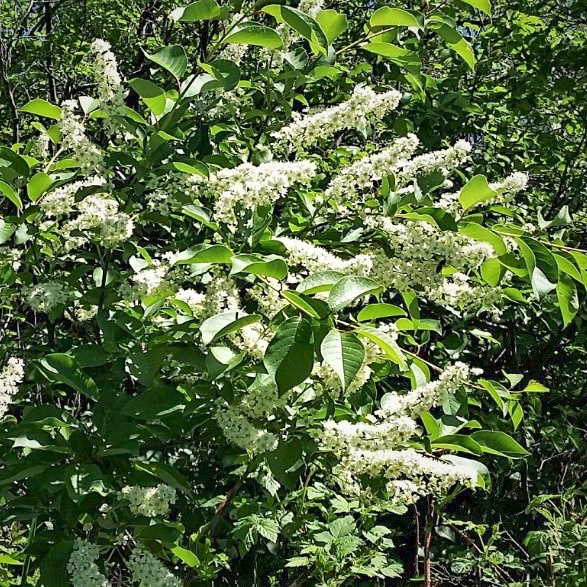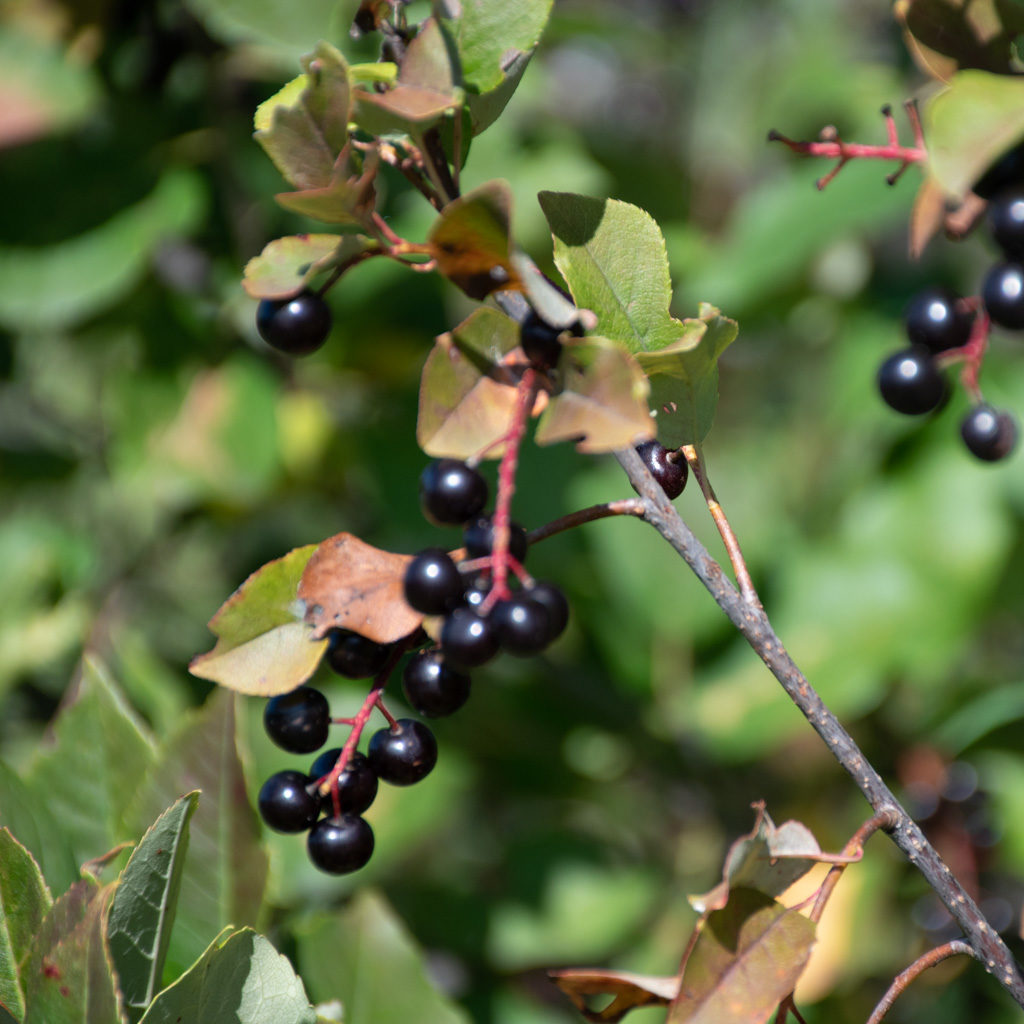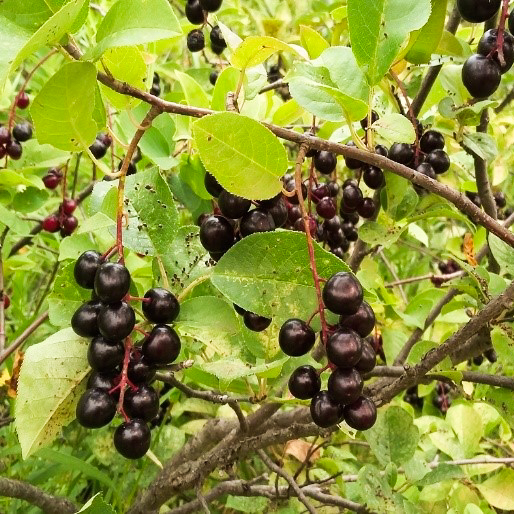High Bush Cranberry (Viburnum opulus var. americanum) is native throughout Alberta and much of North America. It is actually not a cranberry but a member of the Honeysuckle family, though its fruit, or “drupes” as they are known taxonomically, strongly resemble cranberries in both appearance and taste (umaine.edu).
This deciduous shrub grows up to 4 m. tall with a smooth grey bark. The leaves are opposite, with three shallow lobes and sharply toothed edges. The flowers are showy flat-topped clusters. The larger white flowers along the edges are infertile; the inner smaller yellowish ones are fertile.
According to the University of Maine website, “The flowers are hermaphrodite (having both male and female organs) and are therefore self-fertile, meaning that an individual plant’s flowers can pollinate one another, so there is no need for a second type (or even a second individual plant) to provide pollen and produce fruit. The flowers are pollinated by both wind and insects.”
The berry-like fruit with a stone inside is reddish orange, matching the shrub’s crimson fall foliage.
There can be some confusion between this and the smaller shrub Viburnum edule, sometimes called Low Bush Cranberry (to 2.5 m. tall). The main difference is in the size of the flower clusters – those of V.edule are much smaller with all flowers the same size (and all fertile?). Thus, the fruit clusters in the fall are also smaller, bearing 5-7 berries rather than upwards of 10.
Source: Johnson , Kershaw, MacKinnon, Pojar. Plants of the Western Boreal Forest and Aspen Parkland, Lone Pine Publishing, 1995.
WASKAHEGAN FIELD NOTES
High Bush Cranberry is often found in the same location as Chokecherries along the Saunders, Kopp and Coal Lake trails. The large discs of flowers in May to early June are surprising. In September – especially after the first frost – you will notice a musty-sour odour like wet socks coming from stands of High Bush Cranberry. This is when the fruit is ripe. It is edible, but quite tart, and shouldn’t be eaten raw in large quantities. Cooked, it has many uses, and combining these with Chokecherries makes a good jelly/jam (see Chokecherry).
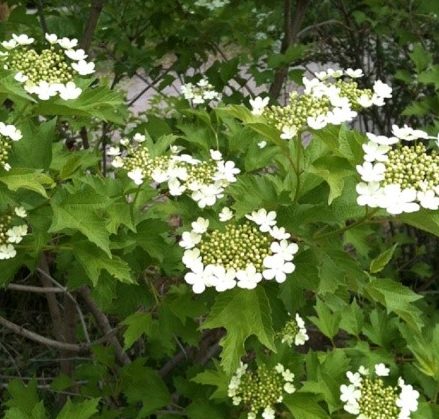
Cranberries in bloom 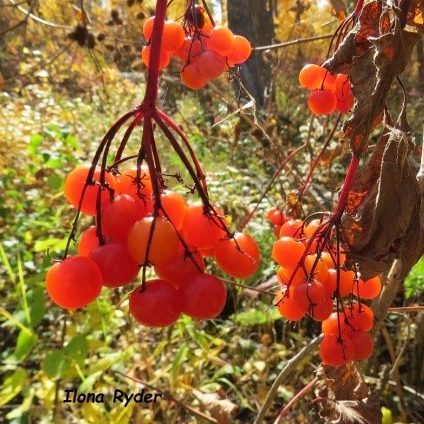
Cranberry fruit
